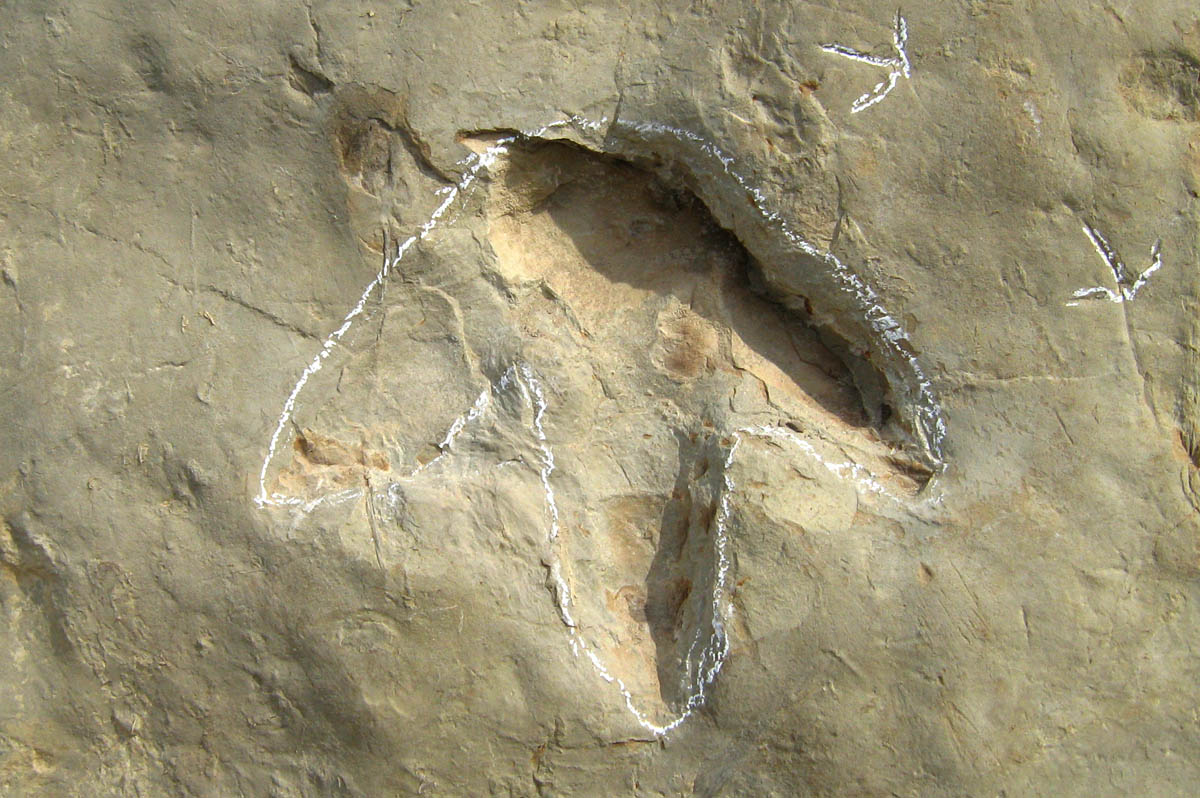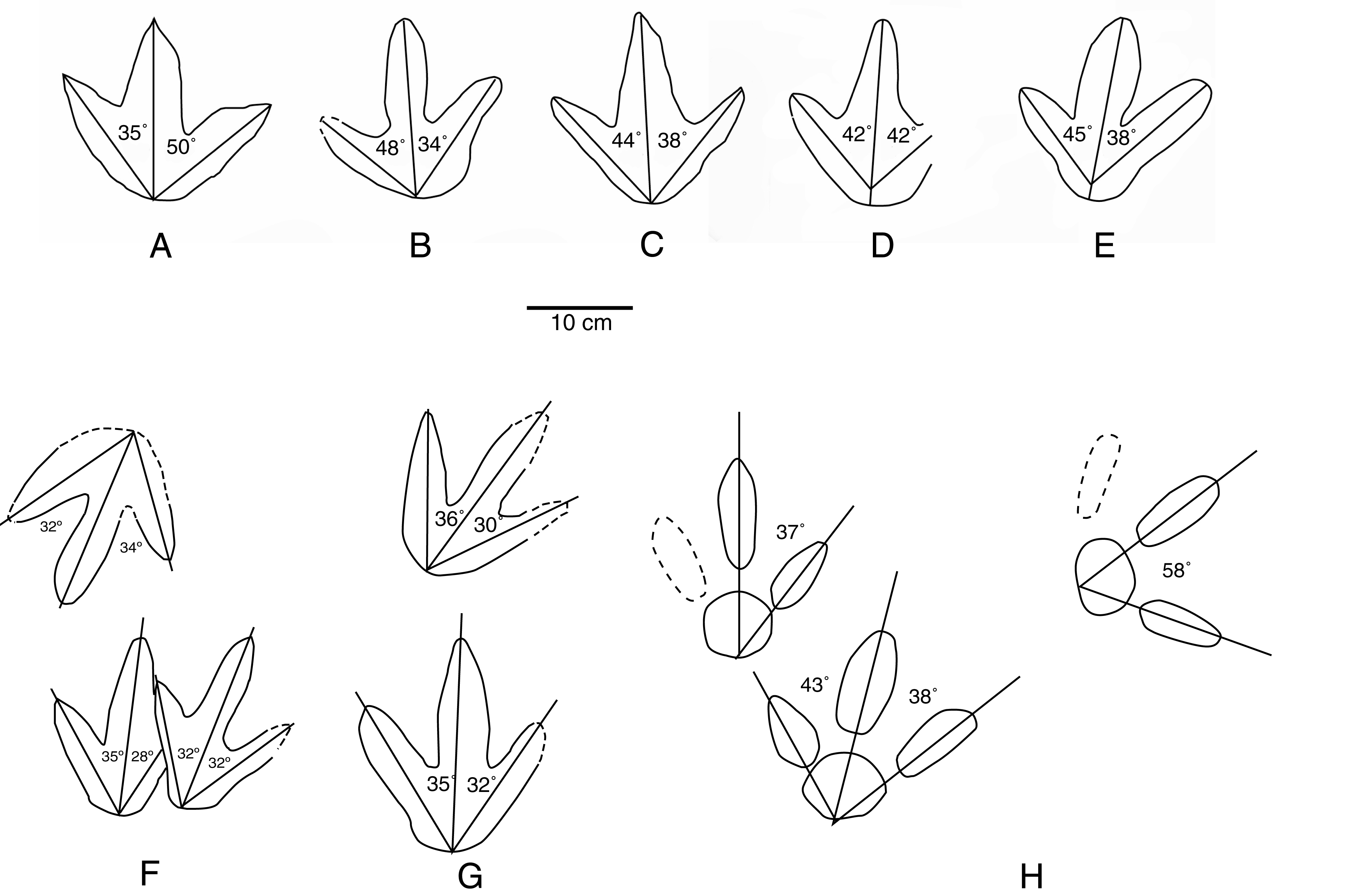Rivavipes Mustoe et al. 2012
JUNIOR SYNONYM(S): N/A
DESCRIPTION: Large plantigrade tridactyl bird tracks showing robust oval heel pad and three elongate digits. Hallux impression is not present. Phalanges in the shape of elongate triangles, rather than parallel sided. Digit III is elongate relative to digits II and IV, which are approximately equal in length. Heel pad deeper proximally than distally.
Digit I (hallux) impressions are seldom present. Phalanges are broad, with most footprints showing merging of impressions for the heel pad and digits II–IV. Ungual impressions show the presence of a small triangular claw, but tracks commonly have indistinct digit terminations, as either an acute or a rounded apex. Tridactyl shape typically fairly symmetric. Interdigital angles for digits II–IV are less than 90 degrees. Track widths measured from apices of digits II and IV are 10–15 cm. Interdigital angles for digits II–III and III–1V are variable, typically between from 32 to 45 degrees. Interdigital angles for digits II–IV range from 60 to 85 degrees. Digits II and IV are approximately equal in length, and approximately 0.8 the length of digit III. For footprints that preserve distinct ungual impressions, digits II–IV each terminate in a small equilaterally triangular toenail.
BEHAVIOR(S): Repichnia
ENVIRONMENTAL SETTINGS: Continental; terrestrial; subtropical
POSSIBLE TRACEMAKERS: Diatryma (=Gastornis)
GEOLOGIC RANGE: Lower Eocene
ADDITIONAL REFERENCES:
REMARKS: Ichnogenus has the same description as the ichnospecies Rivavipes giganteus. Description, environmental setting, possible tracemaker and geologic range written by Dr. George Mustoe of Western Washington University.

